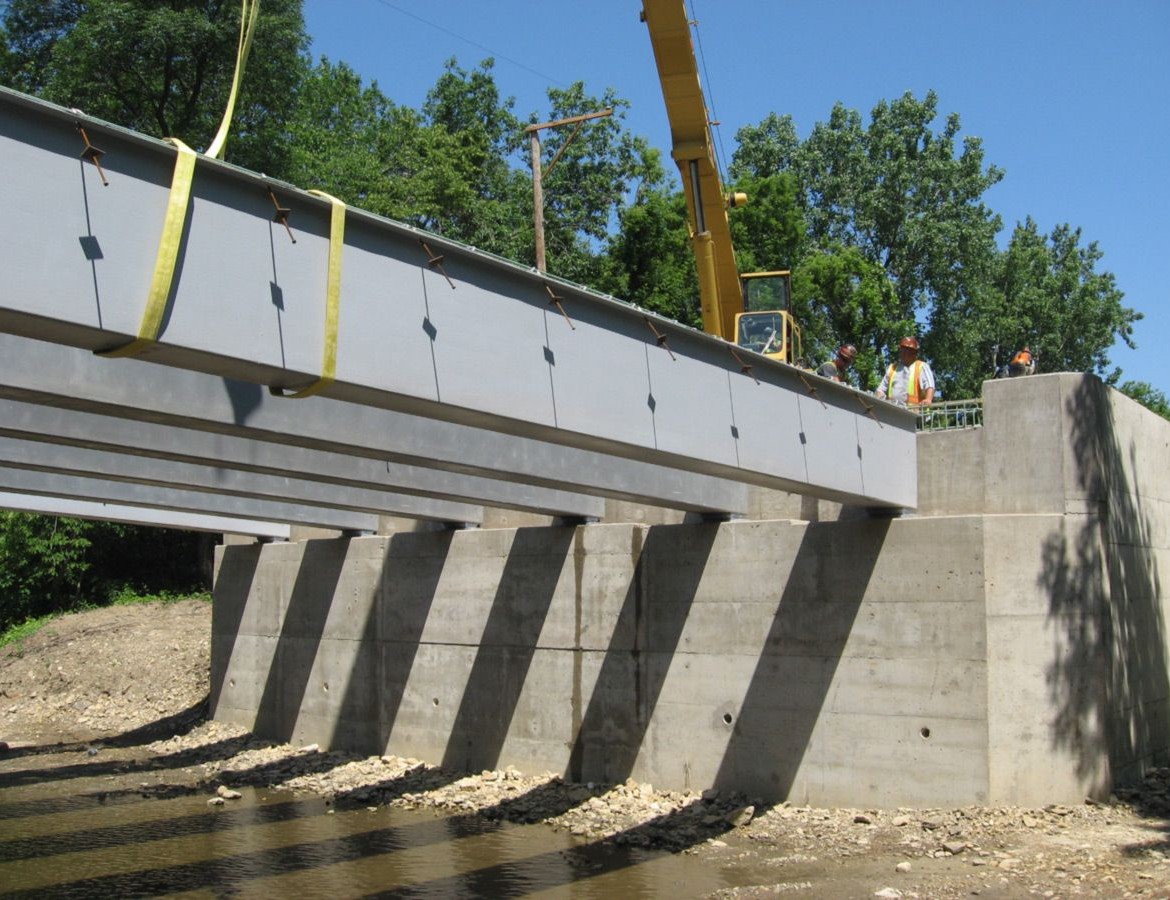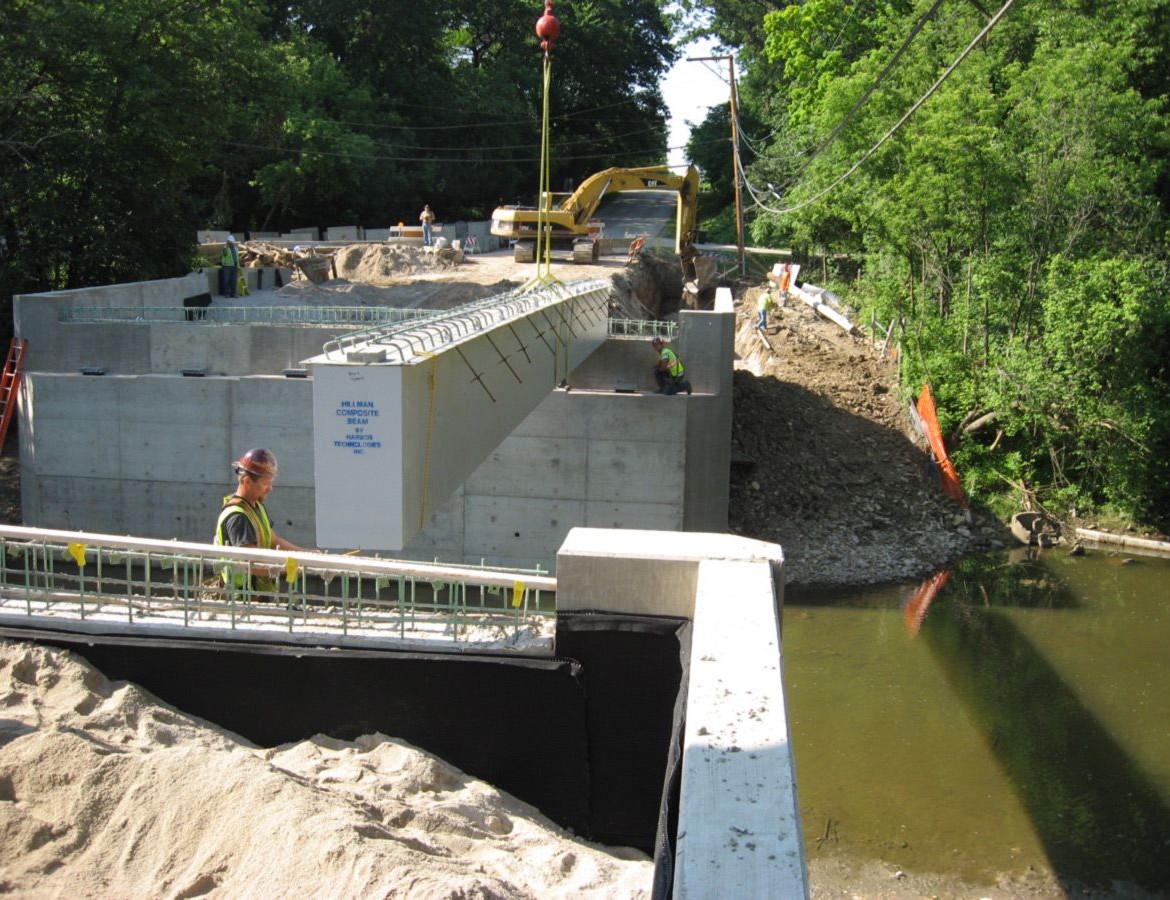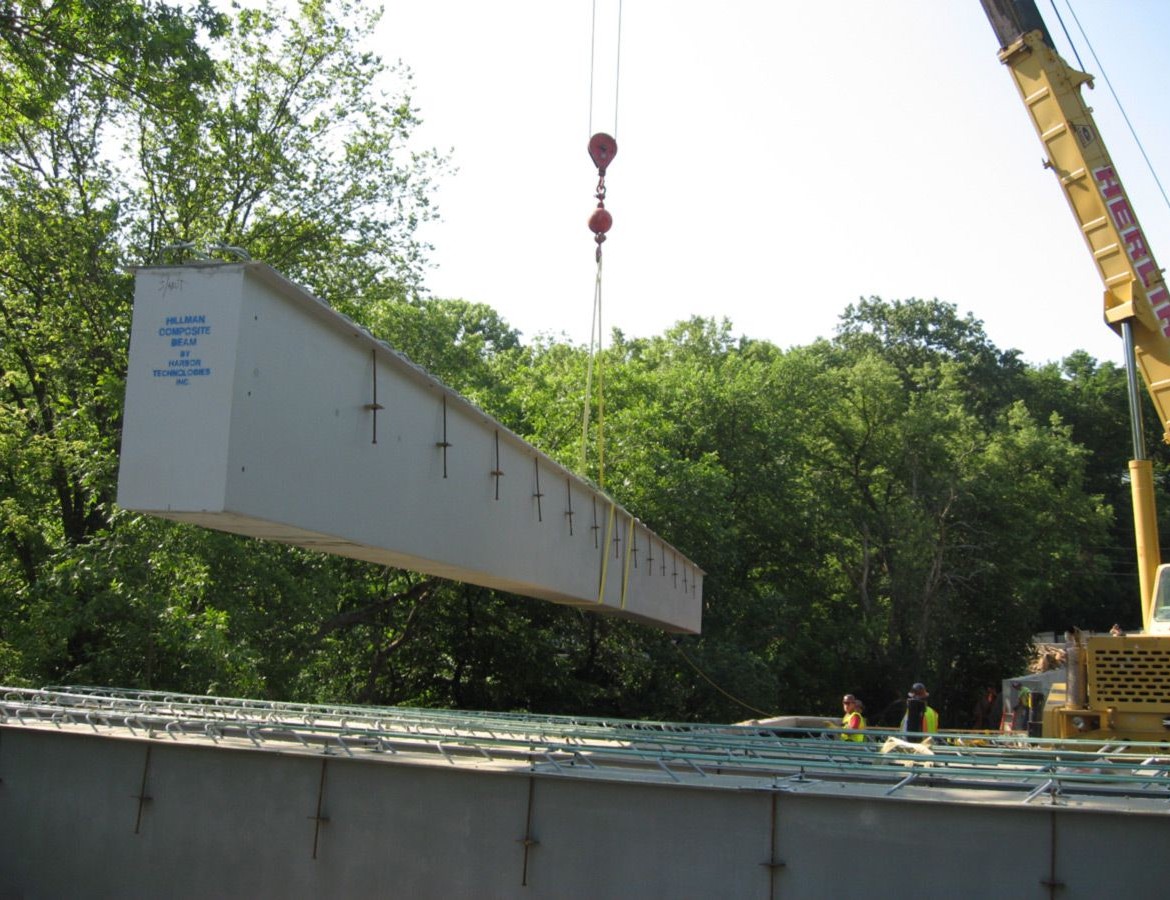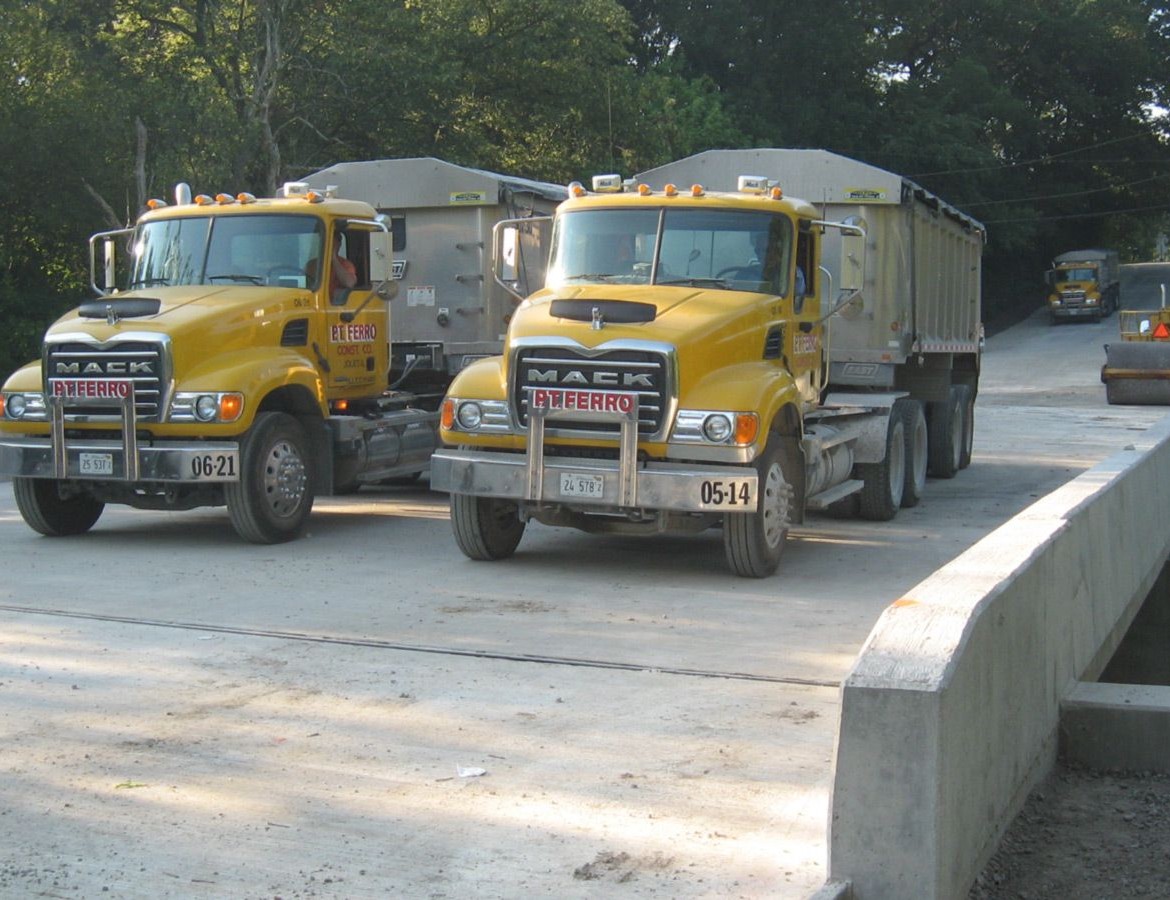




Introducing a new technology requires a few pioneers. This holds true for bridges, too. The existing High Road Bridge in Lockport Township, Illinois, represented the typical structurally deficient and functionally obsolete bridge. Carrying two lanes on a narrow 20-foot deck was made even more treacherous by the steel reinforcing bars falling into Long Run Creek.
Lockport Township also represented the typical small local agency with extremely limited funds to maintain its bridge assets. In order to provide a safer bridge requiring reduced maintenance, Township Highway Commissioner Jack Waxweiler decided to build a better bridge, becoming a pioneer and constructing the first Hillman Composite Beam (HCB®) highway bridge.
Although the HCB had already been laboratory tested and a proof-of-concept bridge had been validated on the railroad test track, it was still a bold choice for Lockport Township to lead the way by installing the first permanent HCB bridge. To help defray the expenses involved with being the first, the Federal Highway Administration (FHWA) allocated $200 thousand in demonstration funds through the Innovative Bridge Research and Deployment (IBRD) program. These additional funds provided the seed money to cover the tooling for this initial project and to conduct rigorous testing on a prototype beam at the University of Maine prior to installation.
Herlihy Mid-Continent Construction constructed this first HCB bridge, comprising six beams placed on closed abutments spanning over Long Run Creek. The contractor had originally scheduled to bring in a 150-ton crane to set the beams. After easily unloading the beams with a forklift, the contractor canceled the big crane and instead set all six beams in less than three hours using a small 50-ton utility crane.
Upon completion, the High Road Bridge, using the first real-world implementation of the HCB, was recognized with a Grand Award from the American Consulting Engineers Council (ACEC) for being one of the eight most significant civil engineering projects nationally in 2008. After sharing in the accolades, Waxweiler is happy to claim Lockport didn’t just have the first permanent HCB bridge in the country, but the first anywhere in the world.
Project Specs:
HCB Piece Weight
Owner: Lockport Township, Illinois
Contractor: Herlihy Mid-Continent Construction
Completion date: September 2008
Project Sheet: Click here for downloadable PDF version
“The technical expertise that HCB Inc. provided was fantastic. They answered any questions we had and worked with us to develop some techniques for erecting them. Using HCBs reduced trucking substantially. We were able to move four beams per truckload. If we had used conventional beams, we would have had to use significantly more trucks. Located in a marine environment, Knickerbocker Bridge was a great application for HCBs because it will withstand corrosion better than steel or concrete.”